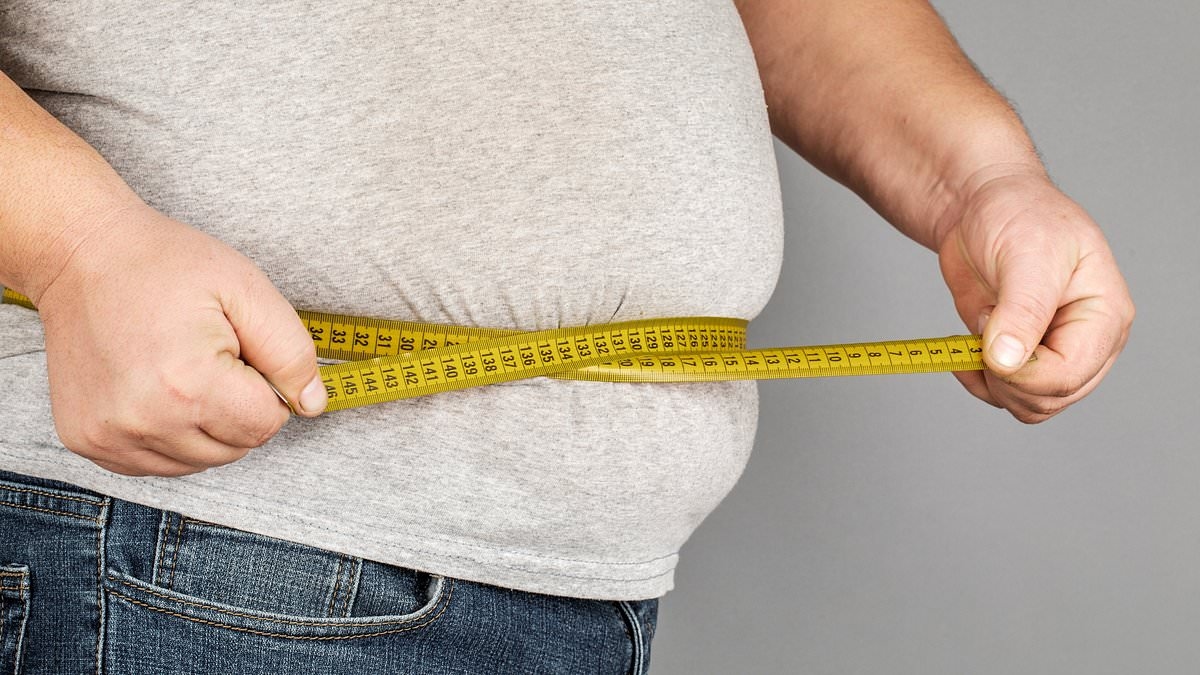So are YOU 'obese' without realising? Find out if you'd classify as dangerously overweight under new rules with our tool

Published: | Updated:
Millions of Britons who have been told they are perfectly healthy could in fact be obese, scientists have revealed.
Under the current rules, a body-mass-index (BMI) score of 18.5 to 25 is healthy, 25 to 29 is overweight, and 30 or above counts as obese — the point at which the risk of serious illness soars.
But obesity experts have a proposed a 'radical overhaul' of how it is diagnosed, arguing BMI charts alone are not 'nuanced' enough.
Shocking research this week found that adopting the new definition would expand the number of people classed as obese by almost 60 per cent.
Fat, the scientists argued, can build up in people who are not typically considered overweight or obese under current rules, where it then sits around the middle.
Older bodies also have an increased fat build-up around the waist that, combined with age-related muscle decline, means there is no overall change in total weight.
This means that despite piling on the flab — a phenomenon dubbed by some as 'skinny fat' — the BMI system fails to raise the alarm, the researchers said.
And people don't realise they are at risk of obesity related health problems, including 'organ dysfunction'.
Instead, they suggest adding waist size and weight-to-height ratio to help diagnose obesity to give a fuller picture of health — and many people may, in theory, be obese without realising it.
Under the new rules, obesity would be defined as either a BMI or over 40, or a BMI above 30, plus at least one raised measure, such as an increased waist circumference or waist-to-height ratio.
People could also be deemed obese under the new rules if they had a BMI below 30 but at least two raised measures.
According to the NHS, an unhealthy waist circumference measures 37in (94cm) or above for men and 31.5in (80cm) or above for women.
An unhealthy waist to height ratio, meanwhile, is defined as if a person's waist measurement is half (0.5) or more than half of their height.
The average UK man, for example, who stands at 5ft 9in tall and weighs 85.4kg, would be considered obese under the new definition if he had a waist circumference measurement of 37in.
This is because his waist to height ratio would sit at 94cm: 175cm, giving him a score of 0.54.
Despite a BMI of 27.9, putting him in the overweight category under the old criteria, he would have two raised measures.
A woman, meanwhile, who stands at 5ft 2in tall and weighs the average UK female weight of 72.1kg would also be classed as obese under the new criteria and overweight using the old.
This is because, with an unhealthy waist circumference of 31.5in, her waist to height ratio would also be 0.51, giving her two raised measures.
In Britain, around 13 million adults are currently obese. The new calculation could see that figure soar to nearly 21 million.
Researchers backed up their findings with a study of over 300,000 American adults aged between 38-to-65-years, split roughly equally between men and women.
Writing in JAMA Network Open, the Harvard and Massachusetts General Hospital researchers said: 'The prevalence of obesity increased by 60 per cent when using the new definition compared with the traditional BMI-based one.
The new definition of obesity was first proposed in January in a report by 58 global experts published in the prestigious Lancet Diabetes & Endocrinology journal.
At the time, their recommendations were endorsed by numerous organisations, including the Royal College of Physicians.
Experts have previously criticised BMI as a measure of health.
Devised by a Belgian mathematician in the 1830s, doctors have relied on BMI for almost two centuries.
It comes as a raft of long-awaited anti-obesity measures came into force in England earlier this month.
Under new Government laws, buy one, get one free deals on sweets, crisps, sugary drinks and other snacks have been outlawed in England, along with free refills of fizzy drinks in restaurants and cafés.
The crackdown will be followed in January by a ban on online adverts for unhealthy food and drink, and restrictions on TV advertising before 9 pm.
Ministers say the policies are designed to curb Britain’s growing obesity crisis.
A sobering report last year warned that Britain’s spiralling weight problem has fuelled a 39 per cent rise in type 2 diabetes among under-40s, with around 168,000 young adults now living with the disease.
Excess weight has also been linked to at least 13 types of cancer and is the second-biggest preventable cause of the disease in the UK, according to Cancer Research UK.
Daily Mail





